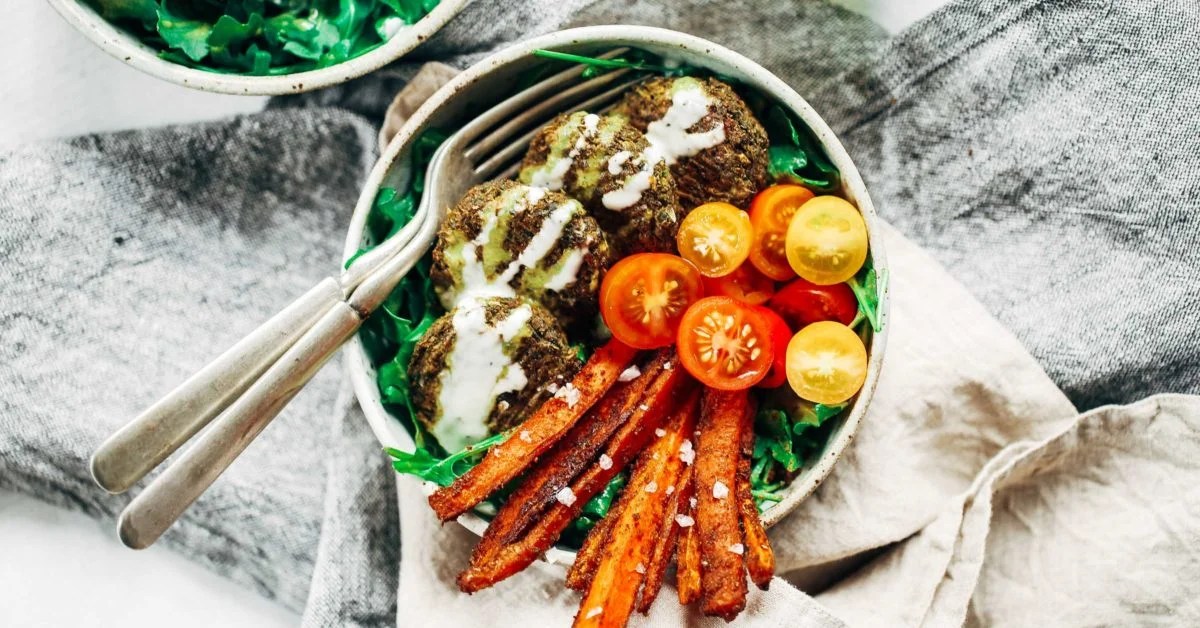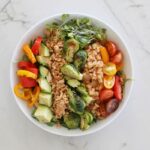Craving delicious, healthy meals without spending hours in the kitchen? Imagine vibrant plates of flavorful paleo dishes, ready in a mere ten minutes. This guide unveils the secrets to crafting quick, satisfying, and nutritious meals that align perfectly with your paleo lifestyle. We’ll explore simple recipes, essential pantry staples, efficient meal prep strategies, and even visually guided step-by-step instructions, transforming your weeknight dinners from a chore into a joyful culinary adventure.
From understanding the nutritional benefits of key ingredients to mastering time-saving meal prep techniques, we’ll empower you to effortlessly create a variety of 10-minute paleo meals. Discover how to adapt recipes to suit your dietary preferences and explore creative variations that keep your meals exciting and delicious, all while staying true to the principles of the paleo diet. Prepare to redefine your perception of quick and healthy eating.
Ingredient Spotlight

Building a robust paleo pantry is key to whipping up delicious and nutritious meals in minutes. These five staples form the foundation of countless quick and easy paleo recipes, offering versatility and nutritional benefits that support a healthy lifestyle. Understanding their uses and potential substitutes empowers you to create diverse and exciting meals, even with limited ingredients.
Essential Paleo Pantry Staples
Five essential ingredients form the backbone of a well-stocked paleo pantry. These versatile items can be incorporated into a wide variety of dishes, from quick breakfasts to satisfying dinners. Their nutritional density makes them a cornerstone of a healthy paleo diet.
- Canned Sardines or Salmon: Rich in omega-3 fatty acids, protein, and vitamin D, these canned fish are incredibly versatile. They can be added to salads, used as a base for quick patties, or enjoyed straight from the can. Their strong flavor profile adds depth to many dishes.
- Coconut Aminos: A soy-free alternative to soy sauce, coconut aminos provide a savory umami flavor to stir-fries, marinades, and sauces. They’re lower in sodium than soy sauce and offer a subtle sweetness.
- Olive Oil: A healthy fat source crucial for overall health and brain function. Olive oil is a staple in many paleo recipes, used for cooking, sautéing, and dressing salads. Its rich flavor complements many dishes.
- Sweet Potatoes: A naturally sweet and versatile root vegetable packed with vitamins A and C, and fiber. They can be roasted, mashed, or added to soups and stews. Their naturally sweet flavor makes them a great alternative to refined sugars.
- Bone Broth: A nutrient-rich liquid brimming with collagen, minerals, and amino acids. Bone broth can be used as a base for soups, stews, or even added to smoothies for a boost of protein and nutrients. Its rich flavor adds depth and complexity to many dishes.
Paleo Ingredient Substitutions
Sometimes, your pantry might be lacking a specific paleo staple. These substitutions offer viable alternatives, maintaining the integrity of your paleo diet.
- Substitute for Canned Fish: If you don’t have canned sardines or salmon, canned tuna (packed in olive oil) provides a similar protein and healthy fat boost. It can be used in much the same way.
- Substitute for Coconut Aminos: Bragg Liquid Aminos (coconut aminos alternative) offer a comparable savory flavor profile and can be used in similar applications.
- Substitute for Olive Oil: Avocado oil offers a similar healthy fat profile and high smoke point, making it suitable for cooking at high temperatures. Its slightly nutty flavor adds a unique twist to dishes.
- Substitute for Sweet Potatoes: Butternut squash or carrots offer a similar sweetness and nutritional profile, though with slightly different flavor profiles. They can be used interchangeably in many recipes.
- Substitute for Bone Broth: Chicken broth (ensure it’s low-sodium and free of additives) can be used as a substitute in many recipes, though it won’t provide the same collagen benefits as bone broth.
Nutritional Benefits of Essential Staples
The five essential pantry staples offer a wealth of nutritional benefits, contributing significantly to overall health and well-being.
- Canned Sardines/Salmon: Excellent sources of omega-3 fatty acids, crucial for brain health, reducing inflammation, and supporting cardiovascular health. They are also rich in protein and vitamin D.
- Coconut Aminos: A good source of electrolytes, particularly potassium, and free of soy, gluten, and GMOs.
- Olive Oil: Rich in monounsaturated fats, known to lower LDL (“bad”) cholesterol and improve heart health. It also contains antioxidants which protect against cell damage.
- Sweet Potatoes: High in beta-carotene, which the body converts to vitamin A, essential for vision, immune function, and cell growth. They’re also a good source of vitamin C and fiber.
- Bone Broth: A significant source of collagen, which supports joint health, skin elasticity, and gut health. It’s also rich in minerals like calcium, magnesium, and phosphorus.
Meal Prep Strategies for Busy Weeknights
Juggling work, family, and a healthy lifestyle can feel overwhelming, especially when it comes to mealtimes. However, with strategic meal preparation, even the busiest weeknights can be filled with delicious and nutritious paleo meals ready in under 10 minutes. This involves planning ahead and utilizing efficient techniques to maximize your time and minimize cooking stress. The following strategies will help you conquer your weeknight dinner dilemma.
Batch Cooking for Maximum Efficiency
Batch cooking is a cornerstone of efficient paleo meal prep. This strategy involves preparing large quantities of staple components—proteins, vegetables, and sauces—in advance. Imagine a vibrant scene: a large roasting pan filled with succulent chicken thighs, sweet potatoes glistening with olive oil, and broccoli florets evenly distributed, all roasting to perfection in a single batch. These components, once cooked, can be stored in airtight containers and used throughout the week as building blocks for various meals. For instance, the roasted chicken can become the star of a quick chicken salad, a hearty chicken and vegetable stir-fry, or a simple chicken and avocado bowl. The time saved by not having to cook individual portions each night is substantial, freeing up precious weeknight minutes.
One-Pan Wonders for Minimal Cleanup
One-pan meals drastically reduce cooking time and cleanup. Visualize a single sheet pan, a canvas of culinary creativity, where seasoned salmon fillets rest beside asparagus spears and cherry tomatoes. A drizzle of lemon juice and herbs adds a final touch of elegance. The entire meal cooks simultaneously, requiring minimal attention and resulting in less dishwashing. This strategy is perfect for busy weeknights because it streamlines the entire cooking process from start to finish. The reduction in cleanup time alone makes this method a significant time-saver.
Make-Ahead Components for Assembly-Line Meals
This strategy focuses on creating individual components ahead of time, which can then be quickly assembled into complete meals during the week. Picture a colorful array of pre-prepped ingredients: perfectly diced bell peppers, shredded carrots, pre-cooked quinoa (if incorporating non-paleo elements, ensure to use a compliant alternative like cauliflower rice), and marinated chicken breast strips. These components are ready to be combined in minutes into various meals. This approach is ideal for building diverse meals with minimal cooking time. Each night, you simply assemble your chosen combination, achieving a delicious and balanced meal without lengthy cooking.
Weekly Paleo Meal Plan Incorporating All Three Strategies
This meal plan demonstrates how to integrate the three meal prep strategies for a week of delicious and efficient paleo meals.
| Day | Meal | Prep Strategy | Description |
|---|---|---|---|
| Monday | Roasted Chicken & Sweet Potato Bowl | Batch Cooking | Utilize pre-roasted chicken and sweet potatoes from the weekend batch cook. Add a simple salad. |
| Tuesday | Sheet Pan Salmon with Asparagus and Tomatoes | One-Pan Wonders | A complete meal cooked on a single sheet pan, minimizing cleanup and cooking time. |
| Wednesday | Chicken & Veggie Stir-fry | Batch Cooking | Quickly stir-fry pre-cooked chicken and chopped vegetables (prepared during the weekend batch cook). |
| Thursday | Chicken Salad Lettuce Wraps | Batch Cooking | Use leftover roasted chicken to create a quick and healthy chicken salad. |
| Friday | Assembled Cauliflower Rice Bowls with various toppings | Make-Ahead Components | Combine pre-cooked cauliflower rice, pre-cooked proteins, and various pre-chopped vegetables. |
Time-Saving Benefits Comparison
Batch cooking offers the most significant time savings upfront, requiring a larger initial time investment but resulting in substantial time savings throughout the week. One-pan meals provide excellent time savings during the weeknight cooking process itself, minimizing cooking and cleanup time. Make-ahead components offer a balanced approach, saving time both during preparation and cooking, making it suitable for those with less time on weekends but still wanting quick weeknight meals. The choice of the best strategy depends on individual time constraints and preferences.
Unlocking the potential of 10-minute paleo meals isn’t just about speed; it’s about reclaiming your time and enjoying vibrant, healthy food without compromise. By mastering the techniques and recipes presented here, you’ll effortlessly navigate busy weeknights, savoring delicious meals that nourish your body and soul. Embrace the simplicity, the flavor, and the freedom of quick paleo cooking – your taste buds and your schedule will thank you.
General Inquiries
Can I use frozen ingredients in these recipes?
Yes, many of these recipes can easily incorporate frozen vegetables or fruits. Just be mindful of adjusting cooking times accordingly.
Are these recipes suitable for beginners?
Absolutely! The recipes are designed for simplicity and ease of preparation, making them perfect for those new to paleo cooking.
What if I don’t have all the specified ingredients?
The guide includes substitute suggestions for many common paleo staples, ensuring you can adapt the recipes to what you have on hand.
How can I store leftovers?
Store leftovers in airtight containers in the refrigerator for up to 3-4 days. Reheat gently before serving.


